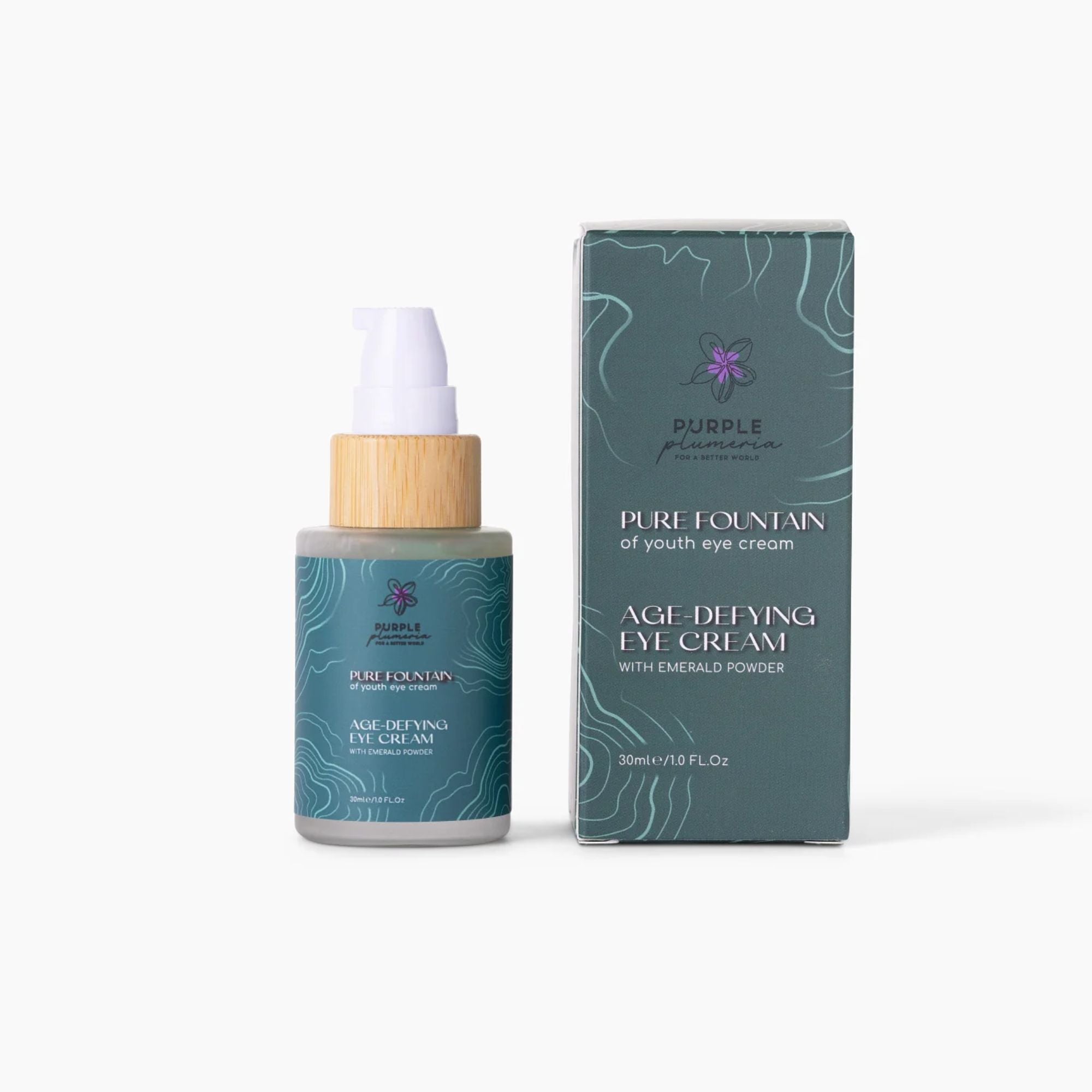-
 30 DAY MONEYBACK GUARANTEE
30 DAY MONEYBACK GUARANTEE
-
 FREE SHIPPING ON ORDERS OVER $49
FREE SHIPPING ON ORDERS OVER $49
-
 PLANT BASED & ECO-FRIENDLY
PLANT BASED & ECO-FRIENDLY
-
 EARN STORE CREDIT
EARN STORE CREDIT
The Dangers of Microplastics
Reasons for Compostable Products: The Risks of Microplastics(Why you should make the switch!)

Plastics are everywhere now. The world produces one garbage truck load of plastic every minute, it's a whopping 525,600 truck loads every year which is a huge amount. Around 40% of plastics produced are single-use plastic and this is what we are focused on eliminating at PurplePlumeria. Science is finding out that plastic is not just detrimental to the planet, but it is likely a problem for human health as well. We believe that better alternatives for human and planet health must be available and that is why we started this company.
For example It is estimated that in the US alone, every person uses around 150 bags of Zip bags a year so as a country we use around 5 Billion bags in a year! These bags usually can not be recycled. According to most recent EPA data only around 8% of recyclable plastic is recycled, the rest ends up in landfills, so even if these bags are recyclable around 92% of them will end up in a landfill or in the ocean.
There is a significant amount of data about the environmental effects of plastic; now more data is emerging about the effects on human health. It is a relatively new field to study so more data is needed but what has been published already is alarming. Research will take many years if not decades to come to a definitive conclusion. Are you willing to wait that long? As physicians, we feel compelled to share the current available evidence to empower you with information. We hope this is helpful in synthesizing the evidence and answering any questions you might have. We hope you join us in this revolution to take back our own health and that of the planet!
-
Why Single-use Plastics are such a big problem, and how are Microplastics formed?
The world has produced 8.3 Billion tons of plastic from the 1950s-2015. In 1950 the world produced 2 million tons compared to almost 460 million tons in 2019. Remember at least 40% of plastic is single-use. Almost every plastic product produced is still in the environment. When plastic ends up in the ocean or the environment, it gets exposed to sunlight and several other elements which eventually make it start breaking down to form microplastics.
-
What are Microplastics?
When plastic stays in the environment for so long it starts breaking down to smaller pieces ultimately forming Microplastics which are particles less than 5 mm in size. Microplastics can be either primary (Glitter for example) or secondary which is most likely the case. It is estimated that there are more than 50 trillion particles in the ocean, they get swallowed by marine life and make their way up the food chain to humans.
-
Where do Microplastics exist in the environment?
Air, Ocean, rivers, soil and water. They have been found essentially everywhere, including remote ecosystems like the Arctic sea ice. They are also in your house dust and your laundry room.
-
How do people get exposed to Microplastics?
In few different ways
- Inhalation: most common way, especially in young children.
- Ingestion: with water and food contaminated with microplastics. Examples include food wrapped in plastic, bottled water, plastic baby bottles and sippy cups. For Infant feeding bottles, the sterilization process itself seems to be problematic, releasing a large amount of microplastics.
- Contact: when you use facial scrub your skin may absorb microplastics from your sponge or the container the scrub has been in.
- All together you may be taking in between 40-50,000 microplastic particles a year, and that doubles if you drink only bottled water!
One study [9] estimated that the average human is consuming around 39,000 to 52,000 microplastic particles per year, with age and gender impacting the total amount. If inhalation of plastic particles is included in the figures, then the amounts rise to between 74,000 and 121,000 particles per year. This number is higher in people who drink only bottled water (extra 90,000 particles).
-
Have they really found microplastics in food?
Unfortunately, yes. Microplastics were found in salt, honey, chicken, seafood, beer, carrots, lettuce, and apples to name a few. It is also in water. One study estimated that if you drink tap water only you may ingest 4000 particles annually, while if you drink bottled water only that number will increase to 90000! And this is not an exclusive list. So far only 15% of food has been tested for microplastics.
-
Does the human body absorb Microplastics?
Around 99% of ingested Microplastics are excreted with stool however particles smaller than 1.5 microns can get absorbed. Pregnancy and breast feeding seem to increase this risk. An Australian study estimated that we consume around 5 gm of plastics every week and around 250 gm every year.
It has been reported that Microplastics 0.1–10 µm in size can cross the blood-brain barrier and the placenta. These are the most precise filtration system in the body, and very concerning that microplastics can get through! Particles <150 µm can cross the gastrointestinal epithelium (the digestive system lining), and particles <2.5 µm can enter the systemic circulation [15,16].
-
What is the evidence of microplastics' presence in the human body?
We will first summarize the evidence in an easy to read way and per organ. We also have a brief findings of each study we used here with all the information you need to find that study if you want to learn more.
- Evidence per organ
- Heart and Circulation: A new study found Microplastic in carotid arteries, it concluded that the presence of Microplastic put people at higher risk for heart disease, stroke and even death. Another study found them in heart and neck vessels but the concentration was much higher in those who had plaques, this study suggested that Microplastics may cause heart disease.
- Blood: one study found Microplastics in 17 out of 22 samples from healthy donors.
- Lungs and Airways: different studies found Microplastics in lung tissues and the airways, some studies suggested that it may cause asthma or Lung disease.
- Breast Milk and Placenta: Studies did find Microplastic there! after C section and vaginal delivery, even in baby's first stool (meconium).
- Male fertility: one study showed that sperm quality and fertility may be affected due to Microplastic.
- Liver: a study did find Microplastic in People with Liver Cirrhosis, they did not find any in people with normal liver.
- Digestive System: they were found in Colon, spleen and Lymph nodes.
- Obesity: some studies questioned if there could be a link between Microplastic and obesity which can happen in few different ways including changes to our Gut bacteria.
- Skin: it was found that Microplastic when small enough can actually go in the skin and probably cause inflammation. it was also found in saliva.
- Urine: a small study found Microplastic in 4 out of 6 samples, mostly in males.
Most recently a study [1] published in the New England Journal of Medicine in 2024 found evidence of polyethelene in 60% of patients who underwent carotid endarterectomy. The study concluded that patients who had microplastic were at higher risk for myocardial infarction, stroke and even death at 34 months compared to those with no microplastic found.
Another study in 2024 [2] found microplastic in all samples from the coronary, carotid arteries and aorta. Most importantly the study found that concentration of Microplastics in heart or carotid arteries with plaque was significantly higher than Aortic samples without plaque, which suggests according to the study that microplastics might be associated with atherosclerosis in humans.
A study in 2023 found MP in Saphenous vein biopsies. 4 out of 5 tested positive [39]
One study [3] found microplastics in 17 out of 22 blood samples from healthy donors.
The Agency for Toxic Substances and Disease Registry (ATSDR) started studying the effects of microplastic in 2020. The early results report [4] cited good evidence of the health effect of Microplastic to lungs and immune system. Full results are not available yet
Another study [5] focused on the effects of Microplastic on Lungs. They stated that Microplastic was found in lung tissues showing that Microplastics can accumulate there [6]. They also reported that extended exposure can cause asthma and pneumoconiosis [7,8].
Several other studies showed that Microplastics are able to cause inflammatory response and oxidative stress
Out of 114 Lung specimens from patients underwent removal of tumor, 87% contained plastic fibers which shows that these fibers can accumulate in lung tissues [10]. A more recent study found Microplastic in 13 out of 20 Lung samples [31] another recent studies found Microplastic in Bronchial wash [35] and sputum [36]. A study in 2022 found MP in 11 out of 13 Lung tissue samples [38].
Microplastics were found in human placenta by C-section and in infant’s first stool [11], they did however cite the possibility of environmental contamination. Microplastic was deceted in placenta after vagina delivery [12]
Another study suggests that nanoplastic may have the ability to pass through the placenta to the fetus [13]. A study in 2023 again found Microplastic composed of different materials in Placenta [37]
Another study found Microplastic in 26 out of 34 samples of breast milk [27].
Recent research has shown that exposure to Microplastics negatively affects male fertility and sperm quality, thus posing a threat to successful conception [30]
A study done in Germany examined the presence of Microplastic in people with Liver cirrhosis compared to those with no liver disease. All patients with Cirrhosis tested positive for Microplastic in liver while none tested positive in the group without Liver disease [14].
One study examined the presence of Microplastic in samples from resected colon. Microplastic was found in all 11 samples. 9 out of 11 were cancer patients [32].
Microplastic particles were found in the liver, spleen, and abdominal lymph nodes of patients with hip or knee replacements [17]
Microplastic can affect microbiota, some studies suggested that they favor the ones that can cause harmful health effects including obesity [24,25]
Another study examined the possible relationship between Microplastic and obesity [18] since Microplastic were shown in studies [23] to decrease ATP production and affect lipid metabolism, oxidative stress as well as its effect on microbiota, favoring obesity related microbes. The chemicals added to plastic are probably a major cause as well.
Exposure of laboratory animals or cell cultures to Microplastics resulted in inflammation, oxidative stress, cell injury, cell viability, altered function [19,20,21,22].
A study noted that Microplastic smaller than 100 nm do have the ability to cross the skin barrier [28], Nanoplastics can induce inflammatory response and affect cellular function, however it is unclear what is the amount of Microplastic that is sufficient to cause health damaging consequences [29]
One study evaluated the presence of Microplastic in skin, head hair washes and saliva [33] they found 16000 Microplastic with head hair providing the highest numbers while saliva provided the least. Microplastics were twice as high in males than females in this study.
A small study in 2023 examined the presence of microplastic in urine. 6 urine samples from healthy volunteers were examined (3 males and 3 females), 4 out of 6 samples were positive for Microplastic, interestingly 3 out of 4 of the positive ones were males [34]
WHO report: Here
-
Conclusion:
The evidence of MP effect on the environment is mounting however data about Microplastic and human health is a developing field. More studies are needed to determine this effect however these studies will take years if not decades to reach a concrete conclusion. Here we provided some of the available evidence of Microplastics presence in the body. Is it normal to find them in Blood? Breast milk? Placenta? Arteries? The decision is yours. Are you willing to wait until we know more information? Or are you ready to make a change now? Keep in mind, making the change will not affect your lifestyle!
-
References
- Marfella R, Prattichizzo F, Sardu C, Fulgenzi G, Graciotti L, Spadoni T, D'Onofrio N, Scisciola L, La Grotta R, Frigé C, Pellegrini V, Municinò M, Siniscalchi M, Spinetti F, Vigliotti G, Vecchione C, Carrizzo A, Accarino G, Squillante A, Spaziano G, Mirra D, Esposito R, Altieri S, Falco G, Fenti A, Galoppo S, Canzano S, Sasso FC, Matacchione G, Olivieri F, Ferraraccio F, Panarese I, Paolisso P, Barbato E, Lubritto C, Balestrieri ML, Mauro C, Caballero AE, Rajagopalan S, Ceriello A, D'Agostino B, Iovino P, Paolisso G. Microplastics and Nanoplastics in Atheromas and Cardiovascular Events. N Engl J Med. 2024 Mar 7;390(10):900-910. doi: 10.1056/NEJMoa2309822. PMID: 38446676.
- Liu S, Wang C, Yang Y, Du Z, Li L, Zhang M, Ni S, Yue Z, Yang K, Wang Y, Li X, Yang Y, Qin Y, Li J, Yang Y, Zhang M. Microplastics in three types of human arteries detected by pyrolysis-gas chromatography/mass spectrometry (Py-GC/MS). J Hazard Mater. 2024 Feb 21;469:133855. doi: 10.1016/j.jhazmat.2024.133855. Epub ahead of print. PMID: 38428296.
- Leslie HA, van Velzen MJM, Brandsma SH, Vethaak AD, Garcia-Vallejo JJ, Lamoree MH. Discovery and quantification of plastic particle pollution in human blood. Environ Int. 2022 May;163:107199. doi: 10.1016/j.envint.2022.107199. Epub 2022 Mar 24. PMID: 35367073.
- Gregory M. Zarus, Custodio Muianga, Candis M. Hunter, R. Steven Pappas. A review of data for quantifying human exposures to micro and nanoplastics and potential health risks,Science of The Total Environment,Volume 756,2021,144010,ISSN 0048-9697,
- Suvash C. Saha, Goutam Saha. Effect of microplastics deposition on human lung airways: A review with computational benefits and challenges,Heliyon,Volume 10, Issue 2,2024,e24355,ISSN 2405-8440,
- Pauly JL, Stegmeier SJ, Allaart HA, Cheney RT, Zhang PJ, Mayer AG, Streck RJ. Inhaled cellulosic and plastic fibers found in human lung tissue. Cancer Epidemiol Biomarkers Prev. 1998 May;7(5):419-28. PMID: 9610792.
- Atis S, Tutluoglu B, Levent E, Ozturk C, Tunaci A, Sahin K, Saral A, Oktay I, Kanik A, Nemery B. The respiratory effects of occupational polypropylene flock exposure. Eur Respir J. 2005 Jan;25(1):110-7. doi: 10.1183/09031936.04.00138403. PMID: 15640331.
- Turcotte SE, Chee A, Walsh R, Grant FC, Liss GM, Boag A, Forkert L, Munt PW, Lougheed MD. Flock worker's lung disease: natural history of cases and exposed workers in Kingston, Ontario. Chest. 2013 Jun;143(6):1642-1648. doi: 10.1378/chest.12-0920. PMID: 23699830.
- Yee MS, Hii LW, Looi CK, Lim WM, Wong SF, Kok YY, Tan BK, Wong CY, Leong CO. Impact of Microplastics and Nanoplastics on Human Health. Nanomaterials (Basel). 2021 Feb 16;11(2):496. doi: 10.3390/nano11020496. PMID: 33669327; PMCID: PMC7920297.
- Pauly JL, Stegmeier SJ, Allaart HA, Cheney RT, Zhang PJ, Mayer AG, Streck RJ. Inhaled cellulosic and plastic fibers found in human lung tissue. Cancer Epidemiol Biomarkers Prev. 1998 May;7(5):419-28. PMID: 9610792.
- Braun T, Ehrlich L, Henrich W, Koeppel S, Lomako I, Schwabl P, Liebmann B. Detection of Microplastic in Human Placenta and Meconium in a Clinical Setting. Pharmaceutics. 2021 Jun 22;13(7):921. doi: 10.3390/pharmaceutics13070921. PMID: 34206212; PMCID: PMC8308544.
- Ragusa A, Svelato A, Santacroce C, Catalano P, Notarstefano V, Carnevali O, Papa F, Rongioletti MCA, Baiocco F, Draghi S, D'Amore E, Rinaldo D, Matta M, Giorgini E. Plasticenta: First evidence of microplastics in human placenta. Environ Int. 2021 Jan;146:106274. doi: 10.1016/j.envint.2020.106274. Epub 2020 Dec 2. PMID: 33395930.
- Wick P, Malek A, Manser P, Meili D, Maeder-Althaus X, Diener L, Diener PA, Zisch A, Krug HF, von Mandach U. Barrier capacity of human placenta for nanosized materials. Environ Health Perspect. 2010 Mar;118(3):432-6. doi: 10.1289/ehp.0901200. Epub 2009 Nov 12. PMID: 20064770; PMCID: PMC2854775.
- Horvatits T, Tamminga M, Liu B, Sebode M, Carambia A, Fischer L, Püschel K, Huber S, Fischer EK. Microplastics detected in cirrhotic liver tissue. EBioMedicine. 2022 Aug;82:104147. doi: 10.1016/j.ebiom.2022.104147. Epub 2022 Jul 11. PMID: 35835713; PMCID: PMC9386716.
- EFSA Panel on Contaminants in the Food Chain (CONTAM), 2016. Presence of microplastics and nanoplastics in food, with particular focus on seafood. Efsa Journal, 14(6), p.e04501.
- Campanale C, Massarelli C, Savino I, Locaputo V, Uricchio VF. A Detailed Review Study on Potential Effects of Microplastics and Additives of Concern on Human Health. Int J Environ Res Public Health. 2020 Feb 13;17(4):1212. doi: 10.3390/ijerph17041212. PMID: 32069998; PMCID: PMC7068600.
- Urban RM, Jacobs JJ, Tomlinson MJ, Gavrilovic J, Black J, Peoc'h M. Dissemination of wear particles to the liver, spleen, and abdominal lymph nodes of patients with hip or knee replacement. J Bone Joint Surg Am. 2000 Apr;82(4):457-76. doi: 10.2106/00004623-200004000-00002. PMID: 10761937.
- Kannan K, Vimalkumar K. A Review of Human Exposure to Microplastics and Insights Into Microplastics as Obesogens. Front Endocrinol (Lausanne). 2021 Aug 18;12:724989. doi: 10.3389/fendo.2021.724989. PMID: 34484127; PMCID: PMC8416353.
- Schirinzi GF, Pérez-Pomeda I, Sanchís J, Rossini C, Farré M, Barceló D. Cytotoxic effects of commonly used nanomaterials and microplastics on cerebral and epithelial human cells. Environ Res. 2017 Nov;159:579-587. doi: 10.1016/j.envres.2017.08.043. Epub 2017 Sep 11. PMID: 28898803.
- Wu B, Wu X, Liu S, Wang Z, Chen L. Size-dependent effects of polystyrene microplastics on cytotoxicity and efflux pump inhibition in human Caco-2 cells. Chemosphere. 2019 Apr;221:333-341. doi: 10.1016/j.chemosphere.2019.01.056. Epub 2019 Jan 8. PMID: 30641374.
- Wu S, Wu M, Tian D, Qiu L, Li T. Effects of polystyrene microbeads on cytotoxicity and transcriptomic profiles in human Caco-2 cells. Environ Toxicol. 2020 Apr;35(4):495-506. doi: 10.1002/tox.22885. Epub 2019 Dec 3. PMID: 31797534.
- Lehner R, Wohlleben W, Septiadi D, Landsiedel R, Petri-Fink A, Rothen-Rutishauser B. A novel 3D intestine barrier model to study the immune response upon exposure to microplastics. Arch Toxicol. 2020 Jul;94(7):2463-2479. doi: 10.1007/s00204-020-02750-1. Epub 2020 Apr 19. PMID: 32307674.
- Deng Y, Zhang Y, Lemos B, Ren H. Tissue accumulation of microplastics in mice and biomarker responses suggest widespread health risks of exposure. Sci Rep. 2017 Apr 24;7:46687. doi: 10.1038/srep46687. PMID: 28436478; PMCID: PMC5402289.
- Fournier E, Etienne-Mesmin L, Grootaert C, Jelsbak L, Syberg K, Blanquet-Diot S, Mercier-Bonin M. Microplastics in the human digestive environment: A focus on the potential and challenges facing in vitro gut model development. J Hazard Mater. 2021 Aug 5;415:125632. doi: 10.1016/j.jhazmat.2021.125632. Epub 2021 Mar 11. PMID: 33770682.
- Li B, Ding Y, Cheng X, Sheng D, Xu Z, Rong Q, Wu Y, Zhao H, Ji X, Zhang Y. Polyethylene microplastics affect the distribution of gut microbiota and inflammation development in mice. Chemosphere. 2020 Apr;244:125492. doi: 10.1016/j.chemosphere.2019.125492. Epub 2019 Nov 27. PMID: 31809927.
- Barceló D, Picó Y, Alfarhan AH. Microplastics: Detection in human samples, cell line studies, and health impacts. Environ Toxicol Pharmacol. 2023 Aug;101:104204. doi: 10.1016/j.etap.2023.104204. Epub 2023 Jun 28. PMID: 37391049.
- Ragusa, A., Notarstefano, V., Svelato, A., Belloni, A., Gioacchini, G., Blondeel, C., Zucchelli, E., De Luca, C., D’Avino, S., Gulotta, A. and Carnevali, O., 2022. Raman microspectroscopy detection and characterisation of microplastics in human breastmilk. Polymers, 14(13), p.2700.
- Gautam, R., Jo, J., Acharya, M., Maharjan, A., Lee, D., Kc, P.B., Kim, C., Kim, K., Kim, H. and Heo, Y., 2022. Evaluation of potential toxicity of polyethylene microplastics on human derived cell lines. Science of the Total Environment, 838, p.156089.
- Sorci, G. and Loiseau, C., 2022. Should we worry about the accumulation of microplastics in human organs?. EBioMedicine, 82.
- D’Angelo, S. and Meccariello, R., 2021. Microplastics: a threat for male fertility. International Journal of Environmental Research and Public Health, 18(5), p.2392.
- Amato-Lourenço, L.F., Carvalho-Oliveira, R., Júnior, G.R., dos Santos Galv˜ ao, L., Ando, R.A., Mauad, T., 2021. Presence of airborne microplastics in human lung tissue. J. Hazard. Mater. 416
- Ibrahim YS, Tuan Anuar S, Azmi AA, Wan Mohd Khalik WMA, Lehata S, Hamzah SR, Ismail D, Ma ZF, Dzulkarnaen A, Zakaria Z, Mustaffa N, Tuan Sharif SE, Lee YY. Detection of microplastics in human colectomy specimens. JGH Open. 2020 Nov 21;5(1):116-121. doi: 10.1002/jgh3.12457. PMID: 33490620; PMCID: PMC7812470.
- Abbasi, S. and Turner, A., 2021. Human exposure to microplastics: a study in Iran. Journal of hazardous materials, 403, p.123799.
- Pironti, C., Notarstefano, V., Ricciardi, M., Motta, O., Giorgini, E. and Montano, L., 2022. First evidence of microplastics in human urine, a preliminary study of intake in the human body. Toxics, 11(1), p.40.
- Baeza-Martínez, C., Olmos, S., González-Pleiter, M., López-Castellanos, J., García-Pachón, E., Masiá-Canuto, M., Hernández-Blasco, L. and Bayo, J., 2022. First evidence of microplastics isolated in European citizens’ lower airway. Journal of Hazardous Materials, 438, p.129439.
- Huang, S., Huang, X., Bi, R., Guo, Q., Yu, X., Zeng, Q., Huang, Z., Liu, T., Wu, H., Chen, Y. and Xu, J., 2022. Detection and analysis of microplastics in human sputum. Environmental science & technology, 56(4), pp.2476-2486.
- Zhu, L., Zhu, J., Zuo, R., Xu, Q., Qian, Y. and Lihui, A.N., 2023. Identification of microplastics in human placenta using laser direct infrared spectroscopy. Science of the Total Environment, 856, p.159060.
- Jenner, L.C., Rotchell, J.M., Bennett, R.T., Cowen, M., Tentzeris, V. and Sadofsky, L.R., 2022. Detection of microplastics in human lung tissue using μFTIR spectroscopy. Science of The Total Environment, 831, p.154907.
- Rotchell, J.M., Jenner, L.C., Chapman, E., Bennett, R.T., Bolanle, I.O., Loubani, M., Sadofsky, L. and Palmer, T.M., 2023. Detection of microplastics in human saphenous vein tissue using μFTIR: A pilot study. Plos one, 18(2), p.e0280594.






